Drawing methods of Old Masters
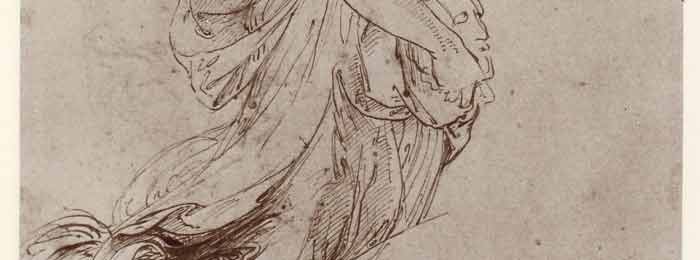
It is the problem of the draughtsman to represent on a plane – his Paper, the multiple three dimensional appearances of nature, conveying the impression of light, depth and movement, as well as the texture of materials, by the sole means of the gradations and modelling in the greys as they go from the white of his paper to the darkest value of his drawing instrument.
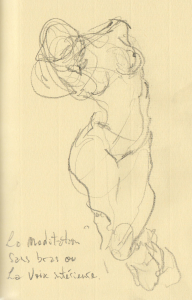 In studying the old masters from this point of view we see that it is possible to establish a hierarchy among them. Mediocre draughtsmen simply do the best they can with nature as they see it. Their eye works like a mirror that contains many imperfections. Portraiture is their largest field of activity because, alas, in this field the public too often contents itself with a photographic resemblance alone. What pleases the ignorant above all,” said Rodin, “is an Inexpressive minutiae of execution and a false nobility of gestures.” The lines of the drawing although well placed have no accents, and the shadows which accompany them, without variation, express no form. “While the palpitating muscles of the Grecian statues are animated and warmed by life, the incoherent dolls of academic art are as though frozen in death.”
In studying the old masters from this point of view we see that it is possible to establish a hierarchy among them. Mediocre draughtsmen simply do the best they can with nature as they see it. Their eye works like a mirror that contains many imperfections. Portraiture is their largest field of activity because, alas, in this field the public too often contents itself with a photographic resemblance alone. What pleases the ignorant above all,” said Rodin, “is an Inexpressive minutiae of execution and a false nobility of gestures.” The lines of the drawing although well placed have no accents, and the shadows which accompany them, without variation, express no form. “While the palpitating muscles of the Grecian statues are animated and warmed by life, the incoherent dolls of academic art are as though frozen in death.”
How disastrous it is when an artist without an adequate knowledge of drawing attempts to work without a model. He cannot visualize with sufficient accuracy a form that is not present to guide him. This was a fault of Ingress whose work shows us, even when he used a model, that his knowledge of anatomy was based on his visual impressions of the form of his subject, rather than on an understanding of its structure. But in Justice to Ingress his work was often charming, particularly his portraits in lend pencil. They reveal the marvelous qualities of an eye that could transcribe whatever it registered, even though his proportions are often erroneous and the gestures are inexplicable. In the sketch, as well as in the painting of “Raphael and the Formarina,”one wonders how it could be that the man who said “drawing is the integrity of art” had never discovered the obvious errors of his own drawing. He executed a ceiling decoration as if it were an easel painting, ignoring the most elementary laws of the perspective which govern this kind of painting. It is hard in fact, to believe that his “Apotheosis of Homer” was really conceived for a ceiling. With the example before him of such artists as Veronese and Tiepolo and many others who were masters of foreshortening, one wonders how he could have ignored their lesson so completely.
If we study Michelangelo, by comparison, we see how forcefully he stressed the expressiveness of his drawings. He accented their explanatory forms with tireless vigor. If he exaggerated, it was in order to strengthen the impressions he desired to, create.
In his work there was seldom, if ever, a doubtful stroke; each one was decisive. To anyone who understands the human body his drawings are superlatively eloquent. He went further than any of his predecessors. The artist in him was always the dominating force; and he never merely imitated nature. His will was ever present in his work to compel us h, understand what he wished to say.
Michelangelo, not only refused to imitate nature with servility, but by the knowledge and understanding that he had acquired it was able actually to, create the figures in his compositions. They came out of his brain and were at the same time true to nature. But he adapted nature to the requirements of his art. To take an example, in his reclining figures, often, instead of showing the flesh with the depressions that would have been cause by contact with the ground on which the figure rested, he gave the same fullness to both sides of the body, and in so doing preserved a better equilibrium in the figure. Here we touch upon the supreme aim of art. It is not the aim of an artist to be content with portraying exactly what he sees, but rather to create harmonious forms as they are seen in their different movements,
The masters, as anyone can see, have given ample proof that there art was compendium of knowledge that was always applied and interpreted in the most intelligent manner. This knowledge of theirs included a thorough understanding of laws of anatomy, proportion and perspective, combined with a rigorously trained visual memory.


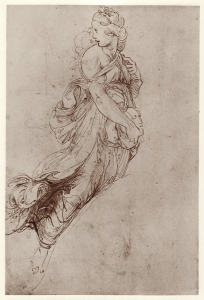
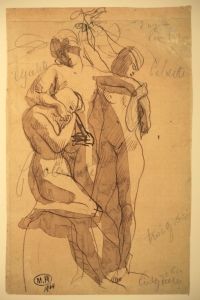
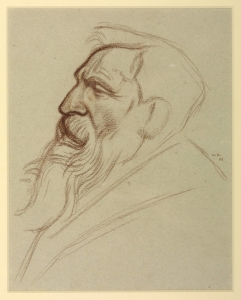
LOVE this article!!!!!!!!!!!!!!!!!!!!! SO true.